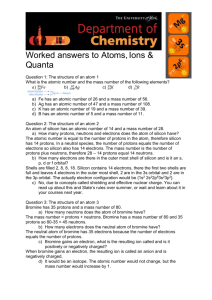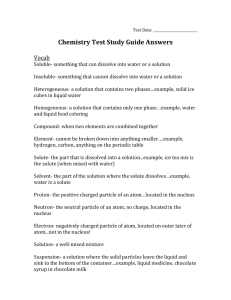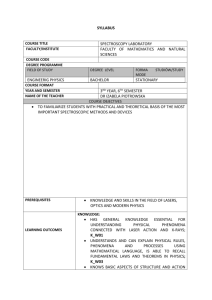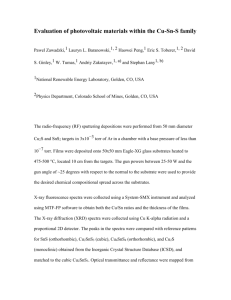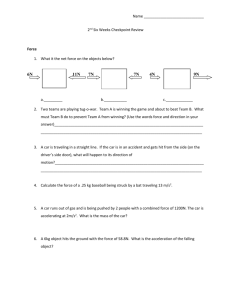Atoms, ions and quanta questions (MS Word , 148kb)
advertisement
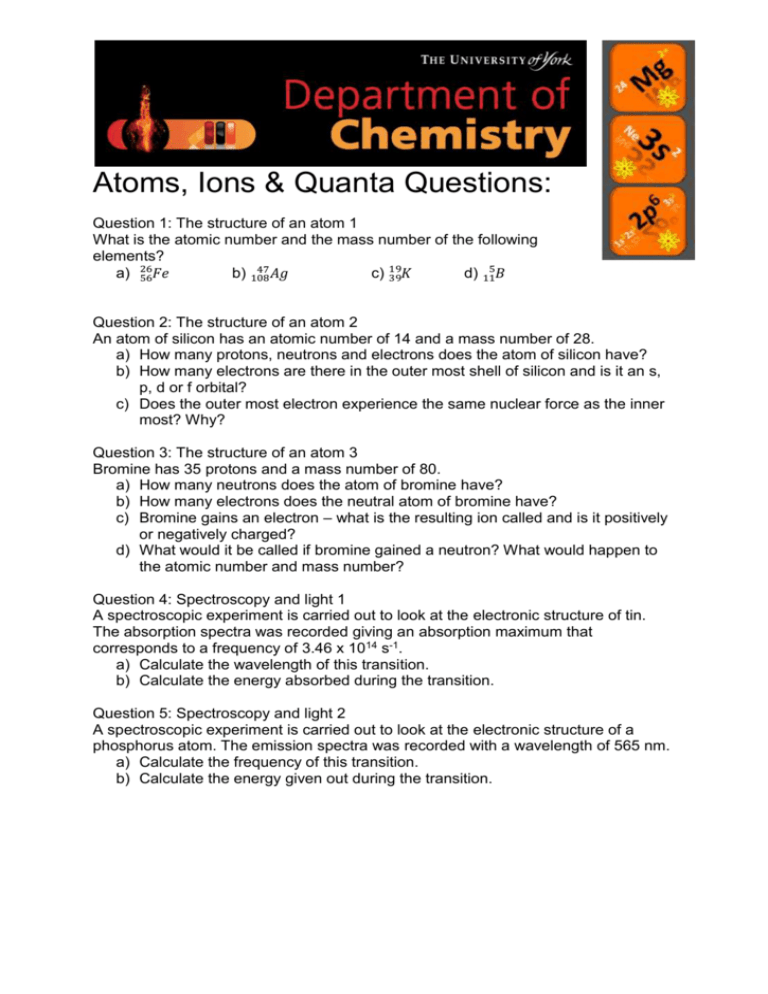
Atoms, Ions & Quanta Questions: Question 1: The structure of an atom 1 What is the atomic number and the mass number of the following elements? 47 a) 26 b) 108 𝐴𝑔 c) 19 d) 115𝐵 39𝐾 56𝐹𝑒 Question 2: The structure of an atom 2 An atom of silicon has an atomic number of 14 and a mass number of 28. a) How many protons, neutrons and electrons does the atom of silicon have? b) How many electrons are there in the outer most shell of silicon and is it an s, p, d or f orbital? c) Does the outer most electron experience the same nuclear force as the inner most? Why? Question 3: The structure of an atom 3 Bromine has 35 protons and a mass number of 80. a) How many neutrons does the atom of bromine have? b) How many electrons does the neutral atom of bromine have? c) Bromine gains an electron – what is the resulting ion called and is it positively or negatively charged? d) What would it be called if bromine gained a neutron? What would happen to the atomic number and mass number? Question 4: Spectroscopy and light 1 A spectroscopic experiment is carried out to look at the electronic structure of tin. The absorption spectra was recorded giving an absorption maximum that corresponds to a frequency of 3.46 x 1014 s-1. a) Calculate the wavelength of this transition. b) Calculate the energy absorbed during the transition. Question 5: Spectroscopy and light 2 A spectroscopic experiment is carried out to look at the electronic structure of a phosphorus atom. The emission spectra was recorded with a wavelength of 565 nm. a) Calculate the frequency of this transition. b) Calculate the energy given out during the transition.


